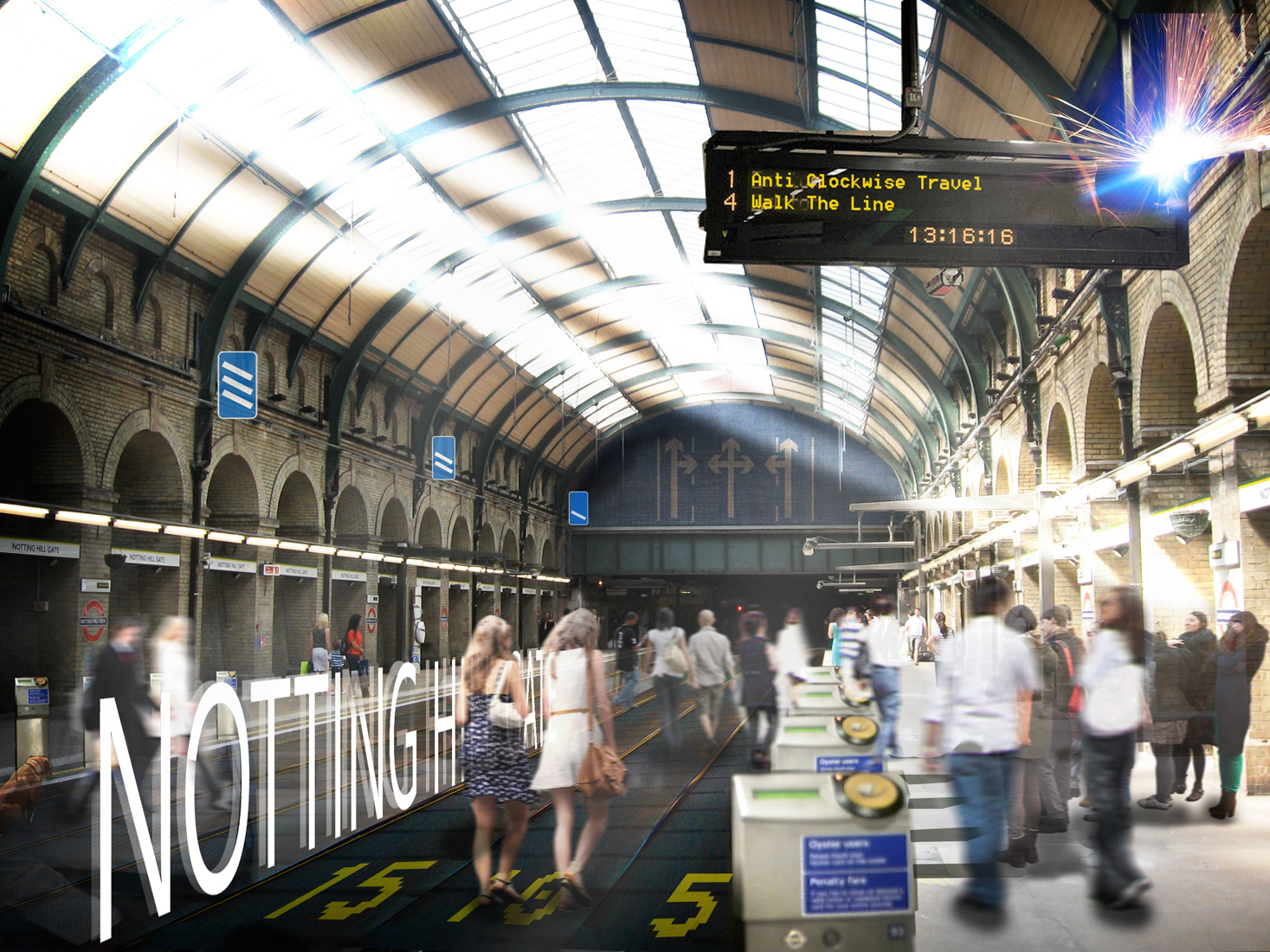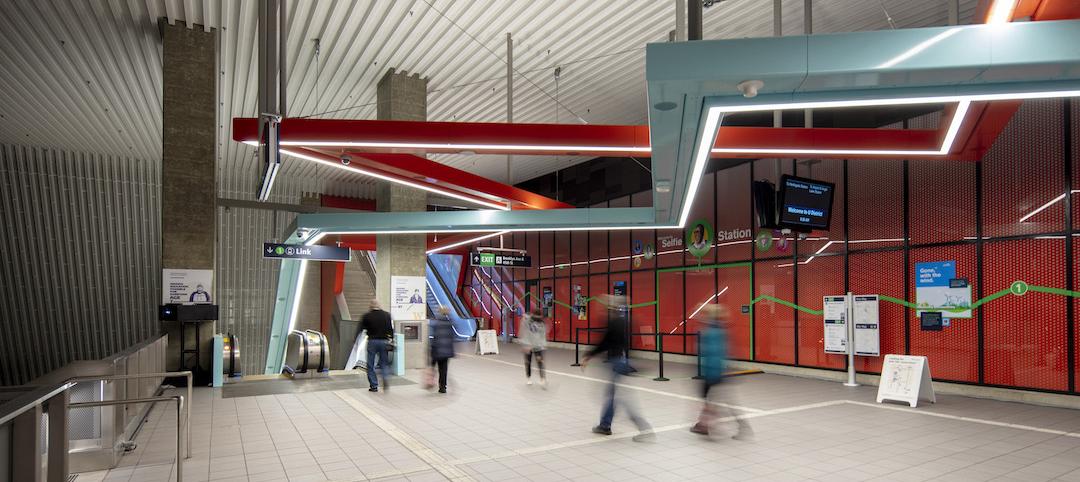London Underground’s Circle Line could be remade into a 17-mile-long moving sidewalk.
Dezeen reports that architecture firm NBBJ pitched a concept where the train service would be removed and three sets of "travelators," as they are called, would be installed. The walkways would run next to each other and operate at three speeds, from the low speed of 3 to 9 mph to the maximum speed of 15 mph.
NBBJ said that the plan would make transportation faster by eliminating the need to stop at stations.
The 36-station Circle carries 114 million passengers annually and has been in operation since 1863. The line runs in both directions around a loop around central London, with an extension that juts off the circuit.
The Daily Mail writes that the Circle Line has some issues. It can only hold up to eight trains at a time, and trains can only reach a top speed of 20 mph. In ideal conditions, trains complete the loop in an hour, but because of the system’s age and the amount of rider congestion, delays are frequent.
With the travelator, walking at a 3 mph clip at the 15 mph top speed will get a commuter around the loop in just 56 minutes. The walkways could hold up to 55,000 people at once.
Wired reports that all practical considerations, like price, construction, and energy usage, have yet to be determined.

Related Stories
Giants 400 | Aug 22, 2022
Top 200 Contractors for 2022
Turner Construction, STO Building Group, Whiting-Turner, and DPR Construction top the ranking of the nation's largest general contractors, CM at risk firms, and design-builders for nonresidential buildings and multifamily buildings work, as reported in Building Design+Construction's 2022 Giants 400 Report.
Giants 400 | Aug 21, 2022
Top 110 Architecture/Engineering Firms for 2022
Stantec, HDR, HOK, and Skidmore, Owings & Merrill top the rankings of the nation's largest architecture engineering (AE) firms for nonresidential and multifamily buildings work, as reported in Building Design+Construction's 2022 Giants 400 Report.
Giants 400 | Aug 19, 2022
2022 Giants 400 Report: Tracking the nation's largest architecture, engineering, and construction firms
Now 46 years running, Building Design+Construction's 2022 Giants 400 Report rankings the largest architecture, engineering, and construction firms in the U.S. This year a record 519 AEC firms participated in BD+C's Giants 400 report. The final report includes more than 130 rankings across 25 building sectors and specialty categories.
Giants 400 | Nov 20, 2021
2021 Transit Facility Giants: Top architecture, engineering, and construction firms in the U.S. transit facility sector
Perkins and Will, Walsh Group, AECOM, and HDR top BD+C's rankings of the nation's largest transit facility sector architecture, engineering, and construction firms, as reported in the 2021 Giants 400 Report.
Transit Facilities | Oct 11, 2021
Seattle’s Sound Transit U District Station opens
LMN Architects designed the project in collaboration with McMillen Jacobs Associates.
Giants 400 | Aug 30, 2021
2021 Giants 400 Report: Ranking the largest architecture, engineering, and construction firms in the U.S.
The 2021 Giants 400 Report includes more than 130 rankings across 25 building sectors and specialty categories.
Resiliency | Aug 19, 2021
White paper outlines cost-effective flood protection approaches for building owners
A new white paper from Walter P Moore offers an in-depth review of the flood protection process and proven approaches.
Resiliency | Jun 24, 2021
Oceanographer John Englander talks resiliency and buildings [new on HorizonTV]
New on HorizonTV, oceanographer John Englander discusses his latest book, which warns that, regardless of resilience efforts, sea levels will rise by meters in the coming decades. Adaptation, he says, is the key to future building design and construction.
Transit Facilities | Jun 10, 2021
SOM redesigns Chicago’s State/Lake Station
The stop is one of the busiest in the city.
Digital Twin | May 24, 2021
Digital twin’s value propositions for the built environment, explained
Ernst & Young’s white paper makes its cases for the technology’s myriad benefits.










![Oceanographer John Englander talks resiliency and buildings [new on HorizonTV] Oceanographer John Englander talks resiliency and buildings [new on HorizonTV]](/sites/default/files/styles/list_big/public/Oceanographer%20John%20Englander%20Talks%20Resiliency%20and%20Buildings%20YT%20new_0.jpg?itok=enJ1TWJ8)






